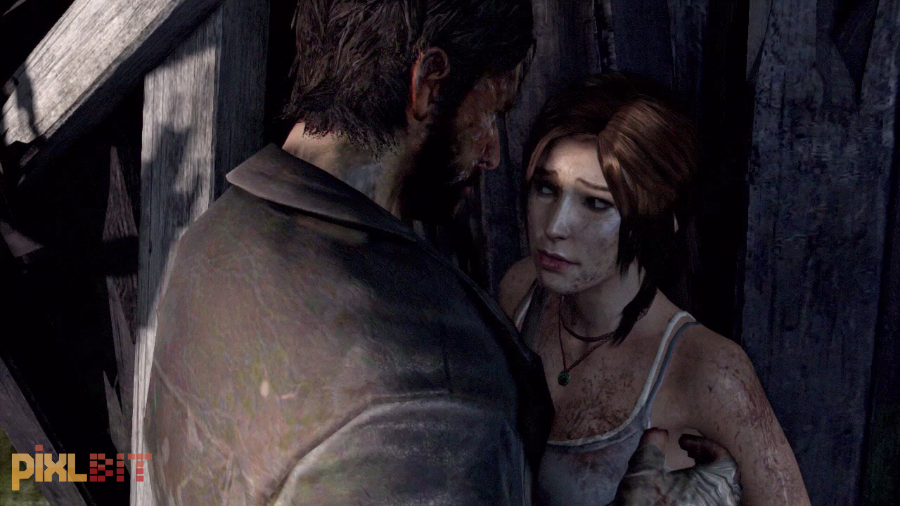Lara's new look does a lot for her character, but has any progress really been made?

When asked to name female video game characters that embody some aspect of stereotypically exploitive depictions of women there are a few that almost anyone would name, but the name that almost always rolls off the tongue first is Lara Croft of Tomb Raider fame.
With proportions akin to a Barbie Doll, Lara was built to take advantage of what was, at the time, the games industry’s target demographic – teenage boys. As the industry grew and as the general demographics expanded and matured, Lara became more and more out of place; a relic of a time gone past.
Still, the Tomb Raider brand carries a level of historical recognition and as is the case with almost any majorly recognized brand, a reboot was inevitable. Crystal Dynamics, who have been at the franchise’s reigns for a while now, have undertaken the task of making a product of '90s culture relevant over 15 years later. It’s no easy task, but one that begins simple enough – with a character redesign.

Our new-look-Lara is much more palatable than her exaggerated original form. While certainly still an attractive woman, the new, younger Lara looks like someone you could possibly meet in the real world. This is a good first step – a step that had to be taken in order to make her relevant again.
It’s the second step that bothers me.
Say what you will about Lara’s looks as designed originally – she did have some good, positive features. She was a strong, gutsy woman, who was capable of holding her own against dominating male antagonists and bizarre creatures as well.
This aspect of her character has been wiped away.
In an interview with Kotaku, Ron Rosenberg, executive producer on the game, made some comments that made me think that while we’ve made some forward progress with Lara aesthetically, we’ve taken some steps back in terms of characterization.
“When people play Lara, they don’t really project themselves into the character. They’re more like ‘I want to project her.’ There’s this sort of dynamic of ‘I’m going to this adventure with her and trying to protect her.’”
Just like that, we’ve reverted to conservative traditional gender roles of the male figure protecting the weaker, female character. I understand that the goal should always be to protect your avatar while playing a game, but think about this, would these comments be made if the same story was told about Nathan Drake?
Of course they wouldn’t, and they wouldn’t have said that about the old Lara either.

After stripping away the issues we had with Lara’s overt sexualized design, we’ve failed to get to the heart of the matter and deal with the core issue – that women are somehow weaker than men and require our protection.
You may play this game and never think that you have to protect Lara, but knowing that the game was designed with this goal in mind bothers me and is indicative that the industry as a whole still doesn’t ‘get it’ when it comes to creating positive female role models in games. We celebrate the physical redesign, but fail to see the greater issue. The original Lara’s design may have been the result of prepubescent fantasy, but she was still a badass and wasn’t to be trifled with.
We SHOULD identify with Lara, regardless of our equipment below the belt. The best protagonists transcend gender. I don’t want to feel like I’m protecting or shepherding Lara – I want to be a part of that journey and experience it with her.
I don’t want to save her and it shouldn’t feel like she needs saving.
I’m glad that there is interest to bring Lara into the new generation and present her as a more realized character, but this is only a single step. We still have a long way to go.

Agree? Disagree? Add to the discussion by sounding off in the comments section below!







Comments